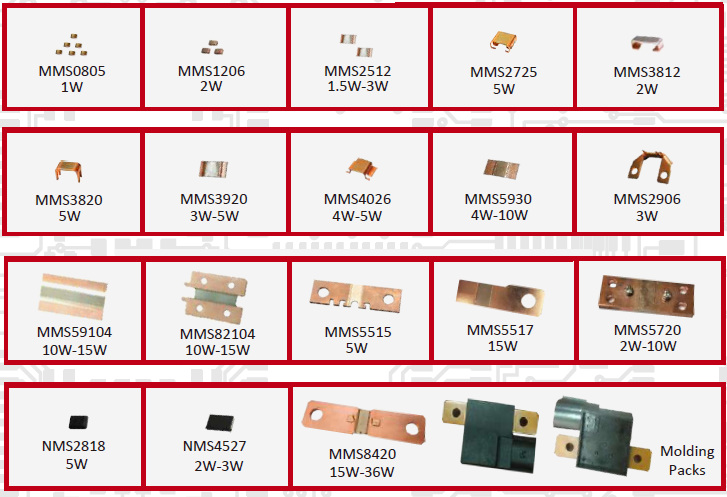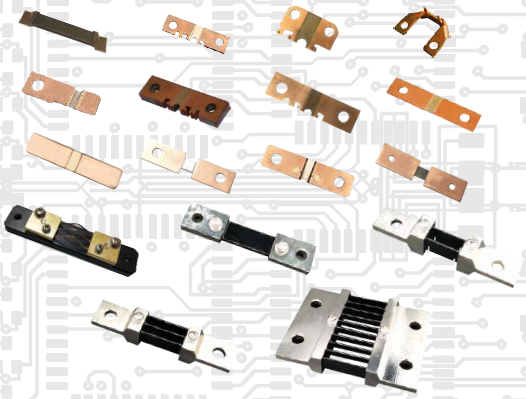Position:Home » Technical Articles
Shunts in electronics
Writer:Microhm Page View:Date:2019-05-08
Shunt resistors is applied with the primary purpose to measure current. However, the meaning of the term shunt in electronics is broader than that. A shunt is an element that is used in a circuit to redirect current around another part. The areas of application vary widely. For some applications, electrical devices other than resistors can be used. A few examples are given to illustrate the diversity of shunts.
 Protecting a circuit against overvoltage
Protecting a circuit against overvoltage
A method to protect a circuit from a too high voltage is using a crowbar circuit. When the voltage gets too high, a device will short circuit. This results in the current flowing parallel to the circuit. This causes immediately a voltage drop in the circuit. The high current through the shunt should
trigger a circuit breaker or a fuse.
Bypass electrical noise
Shunts with a capacitor are sometimes applied in circuits where high-frequency noise is a problem. Before the undesired signal reaches the circuit elements, the capacitor redirect the noise to the ground.

Bypassing a defective device
When one element in a series circuit fails, it will break the complete circuit. A shunt can be used to overcome this problem. The higher voltage that exists due to the failure will cause the shunt to short out. The electricity will pass around the defective element. A good example of this is Christmas lighting.

A method to protect a circuit from a too high voltage is using a crowbar circuit. When the voltage gets too high, a device will short circuit. This results in the current flowing parallel to the circuit. This causes immediately a voltage drop in the circuit. The high current through the shunt should
trigger a circuit breaker or a fuse.
Bypass electrical noise
Shunts with a capacitor are sometimes applied in circuits where high-frequency noise is a problem. Before the undesired signal reaches the circuit elements, the capacitor redirect the noise to the ground.

Bypassing a defective device
When one element in a series circuit fails, it will break the complete circuit. A shunt can be used to overcome this problem. The higher voltage that exists due to the failure will cause the shunt to short out. The electricity will pass around the defective element. A good example of this is Christmas lighting.
Keywords:shunts
Latest News
- Resistor's role in measuring and correcting LED,,,
- Single through-hole resistors' characteristics ,,,
- Why shunt resistors for current sense applicati,,,
- Metal-film resistors with small size, high resi,,,
- 36W High-Current Shunt Resistors MMS8420,,,
- 1W Surface Mount Resistor MPR1206,,,
- An Overview of Microhm Electronics' Resistor Pr,,,
- More anti-sulfur resistors used in harsh envir,,,
- Resistance changes with temperature,,,
- 140W TO247 High Power Heatsinkable Resistor,,,
- MMS5930 is ideal for current sensing in industr,,,
- Shunt resistors selection for engineers' design,,,
- Considerations for choosing precision resistors,,,
- Ceramic Encased Cement Resistors NWH Series for,,,
- Resistors for Passive Balancing in Battery-Pow,,,
Hot Articles
- Microhm will take part in 10th Automotive World,,,
- Thanks for Visiting Microhm's Booth E5-5706 in ,,,
- Resistors in Short Supply: Blame Cars,,,
- New lunch: High Power Precision Shunt Resistor,,,,
- How to Test a Resistor,,,
- Innovative Technology, Future Electric: Electri,,,
- What is Precision Resistors?,,,
- SMD Resistors Sizes and Packages,,,
- The Construction and Features of Metal Film Res,,,
- What is a TO-220 Resisor?,,,
- Hot Selling Products: Precision Shunt Resistors,,,
- How to Calculate the Equivalent Resistance Valu,,,
- What is a Fixed Resistor?,,,
- Resistors in LED Circuits,,,
- Resistors Types and Materials Overview,,,
Resistance applications
- BMS for New Energy Vehicle,,,
- Difference Between High Precision Resistors and,,,
- The Measurement Accuracy of Automotive Shunt is,,,
- Why Zero-Ohm Resistors?,,,
- The Main Application for High Precision and Low,,,
- Precision Resistors' Construction and TCR,,,
- Surface Mount Resistor's Size and Package ,,,
- Heater Blower Motor Resistor in Air Conditioner,,,
- The Four Important Functions of Alloy Resistors,,,
- Shunt Resistor MMS8420 for High Current Stable ,,,
- Urbanization Development Bringing the Transform,,,
- Select the Right Resistor for Harmonic Filterin,,,
- Carbon Film Resistors' Features and Application,,,
- Miniature future for passive electronic compone,,,
- Industrial Roberts Applied to Solar Photovoltai,,,
